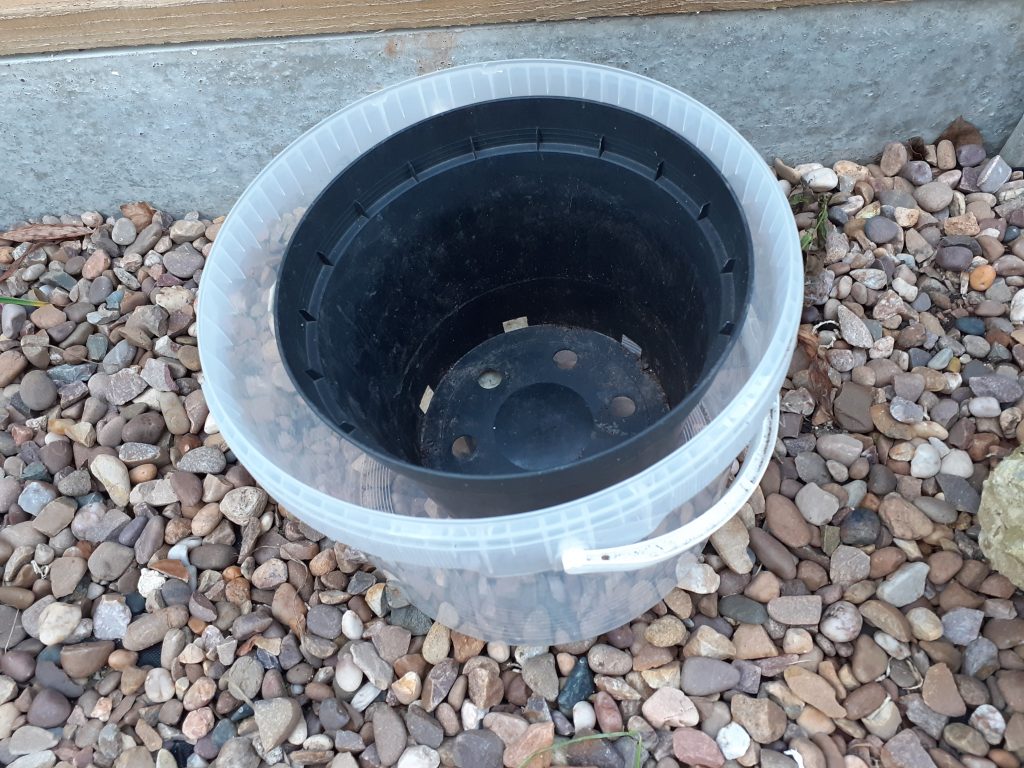Worm composting is a method of generating compost by feeding manure worms with kitchen waste; it is not generated very quickly but it is useful for recycling kitchen waste if you do not have either the facilities or enough materials to make garden compost.
Manure worms digest fresh material, vegetable and fruit peelings and are found in the compost heap as opposed to earth worms which we find in garden soil and digest the garden soil.
Manure worms are brandling worms(pink) or tiger worms(stripey) which can be bought from fishing tackle shops (they are used for bait for fishing) or can be found in garden compost or stacked fresh farmard manure.
It is easy to make a worm composting facility yourself.
I use a bucket, or fat ball container, with a plant pot fitted into it (the plant pot a little smaller than the bucket) with an old roof tile or the like under the plant pot to keep the bottom of it proud of the bottom of the bucket; this is important because the process generates liquid and the compost will be too wet if the plant pot is sat directly onto the bottom of the bucket.


To get started:
- place your plant pot into the bucket(with the tile underneath) and add a couple of inches of compost – it is best if you can use some compost that you have made, or use organic compost that does not contain any artificial chemicals.
- Add some worms and let them get acclimatised for a few days
- Then add some kitchen waste for the worms to digest
- Add a wad of damp newspaper on top and cover with something like some Perspex or something else that makes a rigid lid, punch some holes in the lid
- Keep feeding the worms until your plant pot is full.
- Scoop off the top layer of food which should contain the worms and set aside to start the next batch
- Remove the compost and store for use
- Leave a couple of inches of compost in the pot to start the next batch and add the worms to get started again.

When adding the kitchen waste, add in shallow layers and leave a small area free from the waste to allow the worms to come to the surface if necessary.
Take the lid off for a few hours from time to time.
Watch that the compost does not become to wet or dry – add ripped up newspaper when too wet, or water lightly if too dry
Worm compost is high in nutrients, about ten times that of garden compost.
Can be added to potting compost.
